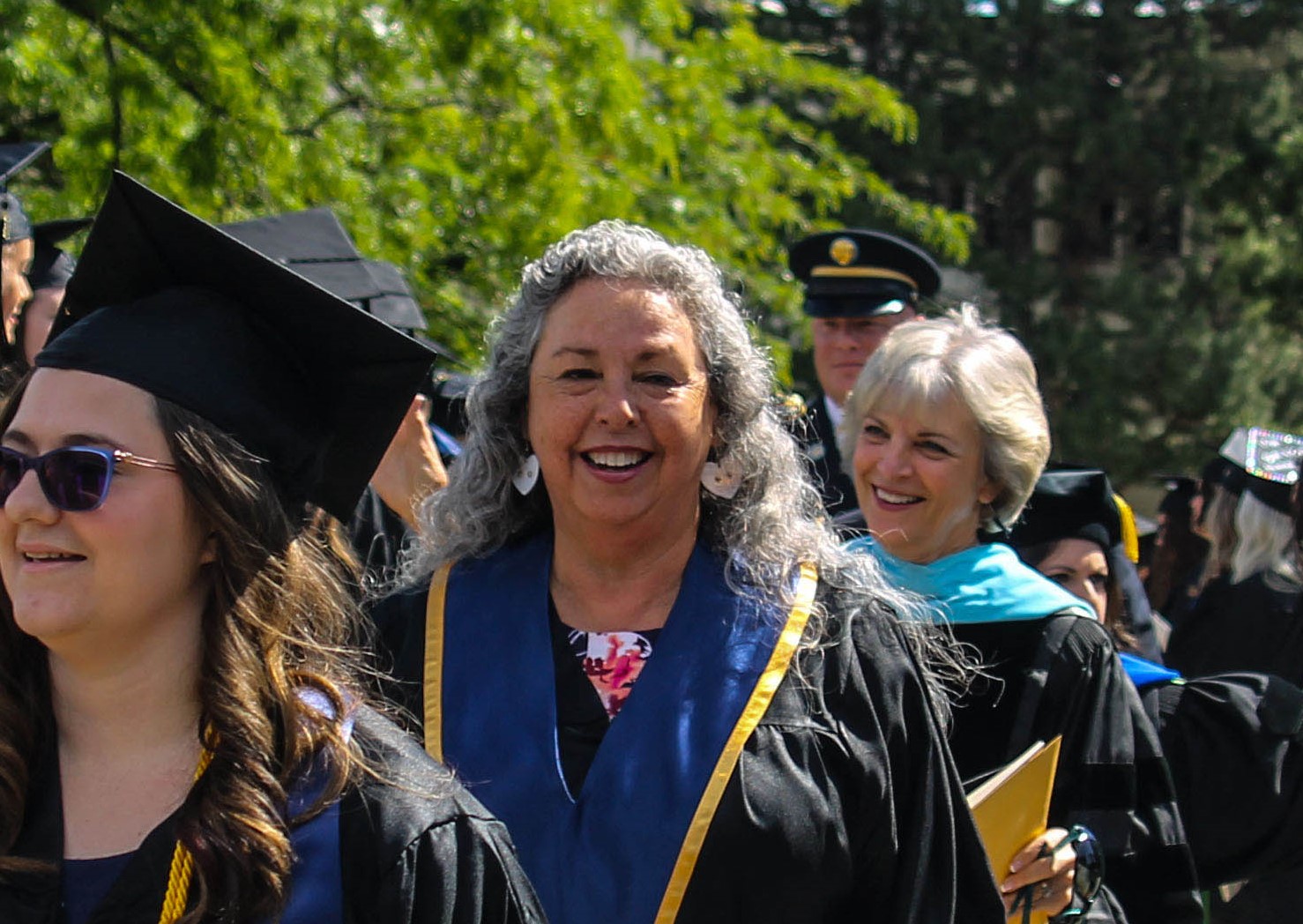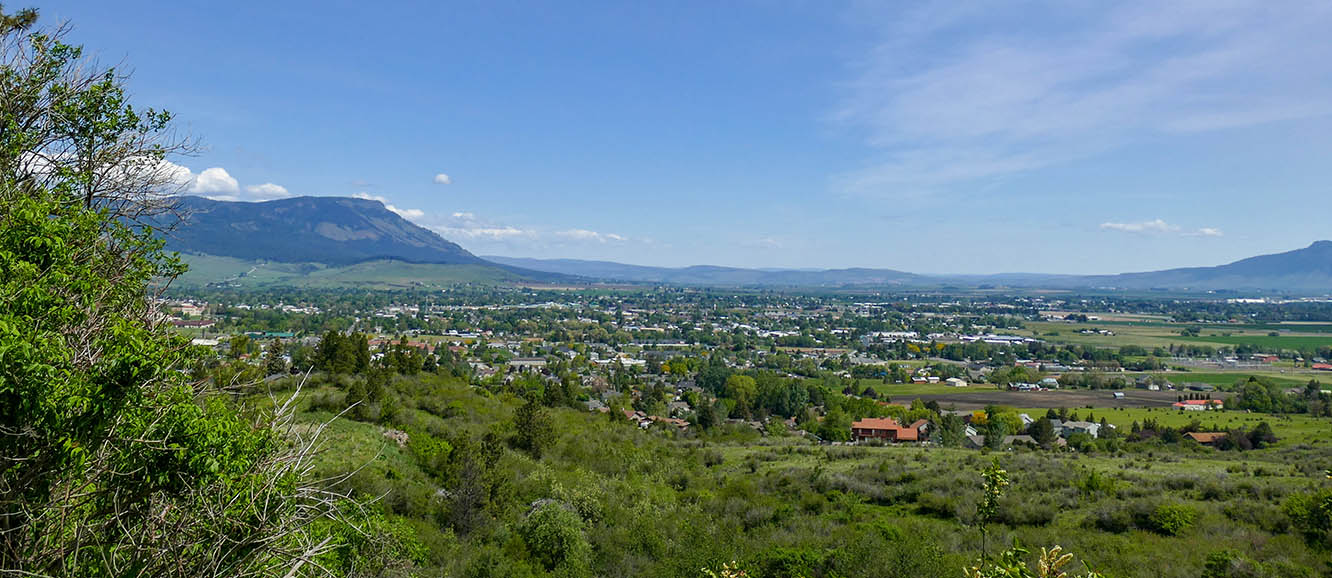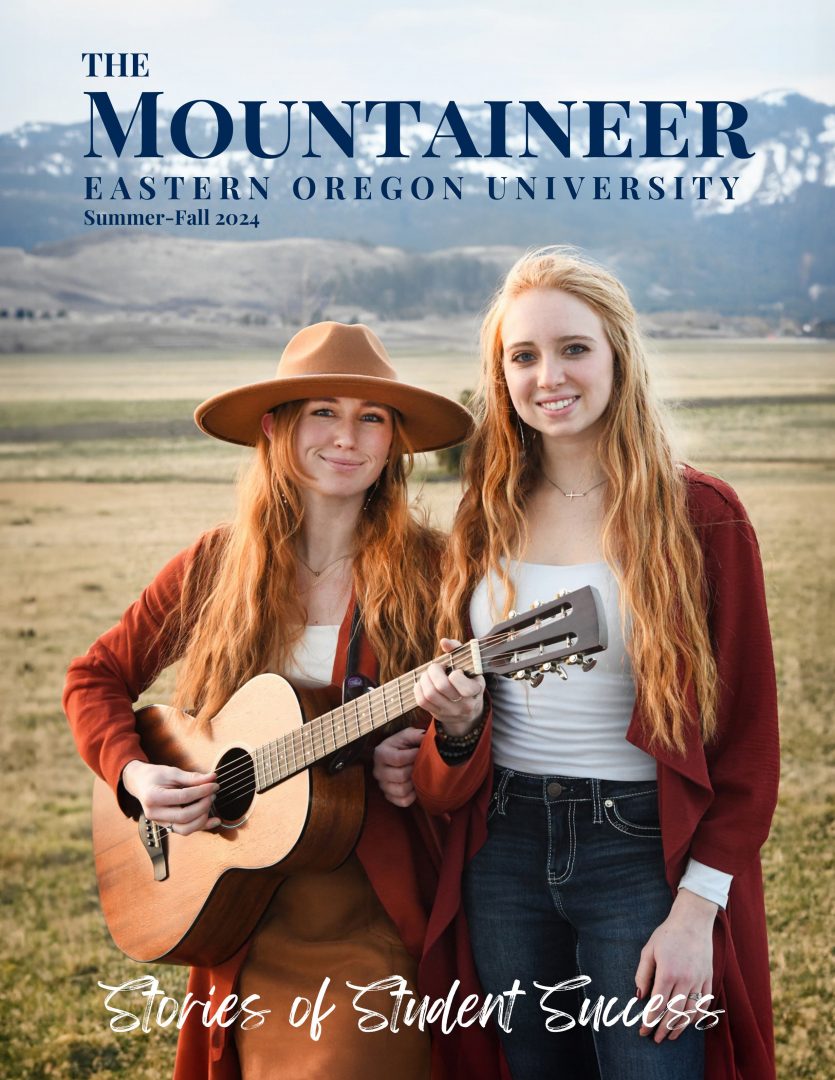This land…

The Grande Ronde Valley is Cayuse country, frequented by Umatilla and Walla Walla tribes. EOU Trustee Bobbie Conner called it, “an abundant and much beloved landscape.”
The Cayuse have burial and gathering sites throughout the valley where EOU has had its main campus for just 91 years. Groups travelling west from the Wallowas came through this trading hub, so the Cayuse gathered here seasonally with their relatives the Walla Walla, Umatilla and the Nez Perce. Conner said these traditions and the connection to the land remain central in these cultures.
“People still hunt, fish and gather,” she said. “We still visit many of the places that were beloved by previous generations.”
Her grandmother’s favorite place was near Catherine Creek, and the Blackhawk Trail along the base of the foothills was important to her family and people. But the treaty signed in 1855 excluded the Grande Ronde Valley from the Confederated Tribes of the Umatilla Indian Reservation.
“It was one of the areas discussed at the treaty in Walla Walla,” Conner said. “The Grande Ronde Valley was very much sought. The reservation that was identified went as far as Five Points Creek. Had the reservation been what we agreed to at the council, that was set aside in June 1855, it would have come very close to what we now call La Grande.”
EOU has its share of connections to local tribes. Alikut Hall is named for one of Conner’s ancestors, a younger brother of young Chief Joseph. Dorion Hall commemorated Marie Aoie Dorian, who travelled from Iowa as the only Indigenous woman in her fur trade expedition as a translator.
Conner pointed out that the resources of northeast Oregon supported communities here long before the arrival of white Americans.
“Timber, fisheries, fire, travel corridors, interpretive stories, water rights, any of those topics begins with our indigenous history,” she said. “Anyone who loves the Grande Ronde Valley must acknowledge that it’s been loved a very long time. It was cared for and stewarded long before the Euro-American trek from the east.”
Today, education plays a significant role in framing the history Conner’s people lived through. Her mother is an EOU alumna, who went on to become the only American Indian educator in every school district she worked in.
“When EOU is educating our people and our neighbors, we want them to know that we still love that land and we want people to take good care of it,” she said. “If EOU is growing the leadership of tomorrow, regardless of their place of origin, we want them to understand what’s important to us.”

Conner highlighted the connectedness of rural Oregon, and said better understanding promises mutual benefit for EOU, reservations and local communities. She said that ignorance and fear of the unknown often keep people apart.
“People tend to think that racism, bias and prejudice are what divide us. That is not true,” she said. “It’s rare that anyone thinks less of our culture and thinks less of us the more they know. Typically, the more they know about us, the better friends we become and the more we can achieve together.”
In the 19th Century, white settlers perceived Cayuse people as murderers and terrorists. The growing throng of immigrants had brought a measles epidemic that wiped out entire villages, and a few members of the tribe sought to stop the wagon train bringing more people through the mountains.
“We have suffered much inequity and oppression since the arrival of Euro-Americans,” Conner said. “It doesn’t have to be that way, but that’s part of our history. We have been subject under local jurisdiction before we had tribal police, and we understand what bias can do in the execution of job duties. I’ve seen it with my own eyes as a child in my hometown.”
As a member of EOU’s governing board and Director of the Tamástslikt Cultural Institute, Conner continues to build relationships as she shares the stories of her people and their land.
“Historically, our people lived our lives in abundance,” she said. “This homeland has food at every elevation if you know how to take care of it. We come from a position of wellbeing that we hope to see again. When we are not in poverty, fighting for survival or under irrational threat, much, much good is possible.”
Named for Native Americans
Alikut Hall
Alikut, also spelled Ollokot, was a younger brother of Young Chief Joseph, the son of Old Chief Joseph and grandson of Wallowa Man (Wilenotkin). He was a Cayuse-Nez Perce man with a Cayuse wife, who was Bobby Conner’s maternal grandfather’s mother. Ollokot and Joseph were considered Joseph band Nez Perce, but Conner said the band is actually the Wallowa band.
Dorion Hall
In 1939, the third building established on campus was named after Marie Aioe Dorion, an indigenous woman who traveled to Oregon from Iowa as a translator. Originally a women’s dorm, it was renamed Hunt Hall after female students moved out. The hall was demolished in 2017 for safety reasons, but Dorion, the only Indigenous woman in her fur trade expedition, remains a significant part of regional history.
Further reading:
“They Are Not Forgotten” is an ethnogeographic place names atlas for the Grande Ronde Valley that includes the original American Indian names of rivers and geographical features. Copies are available in the EOU library.
